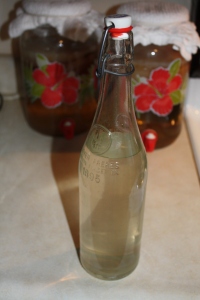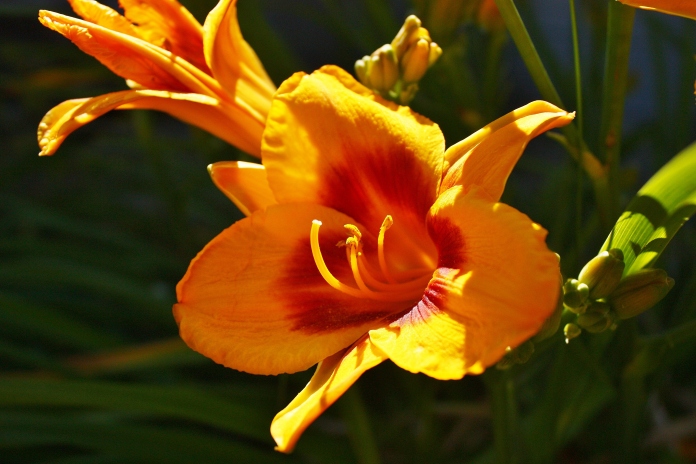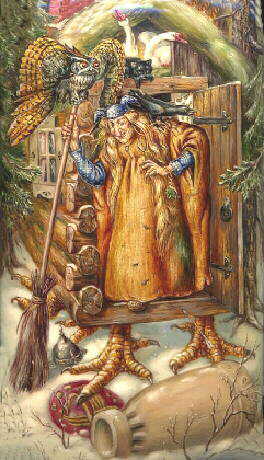Now, we are in the midst of winter…. don’t tell my garden, though, in spite of several days of freezing weather, the plants are starting to grow!…. dead nettle and kale and the neighbor’s flowering quince are starting to bloom… last year the seasons started early and it looks like this year will be even earlier…. But beyond that, it is supposed to be Winter …

“swiss chard and malva neglecta sprouting”
In Chinese medicine winter is the time of nourishing and protecting the kidneys; the taste for the kidneys is salty. Good quality salt is one way to help direct the nutrition you take in to nourishing the kidneys throughout the season.
Although salt has been vilified in recent years, it’s an important component in good health, everyone needs some and some people actually need more than others. Your doctor can do a blood test to see where your potassium – salt balance is and advise accordingly; a few conditions that may benefit from more salt are conditions such as adrenal fatigue (kidneys) and cystic fibrosis. Most people who are getting too much salt, are getting it through processed and prepared foods, where salt is heavily added for taste and preservation. Not only is it a lot of salt, but it’s processed salt, or as I call it “processed salt food product”. This “salt” has been heated to crystallize, iodine added then bleached to make it white again, and often had dextrose (hello, diabetics) or anti-caking agents added in.¹ These added ingredients can be included up to 2%. The FDA considers them non-toxic, so it’s up to you how important that is to you, I prefer to avoid additives. Be aware that many sea-salts are also fairly processed. I use celtic sea salt that’s minimally processed, it’s kind of chunky and damp, so I dry it in the dehydrator (an oven on the lowest setting for a few hours would also work) and then grind it up in the blender or coffee grinder. If you’re adventurous you can add some herbs into the mix for a custom flavored finishing salt. Cutting the salt with up to 50% herbs or spices will also cut the amount of sodium, if you need eat less salt; without losing flavor.
If you’re adventurous and live near a coastline with a clean stretch, you can make your own salt! As many coastal communities put their waste water outflows at public beaches or other pollution sources such as offshore drilling may contaminate the quality of the water, it’s important to do a little research on the quality of your local beaches. I live on Puget Sound and it seems the water doesn’t get clean around my region until up around Camano Island. I’m judging this by the website for Washington State Dept. of Health Shellfish Safety Information, which shows areas closed for pollution…. looking at it today is a bit discouraging. This information changes often, as, well, water moves and weather changes, so check your local area just before you hope to gather some water. I would advise doing the same before foraging for seaweed or other sea life.
So, if it’s a good day, pollution-wise, and you want to give it a try, I’ll show how I’ve harvested salt from the wild.
First gather some sea water in a container. I would avoid busy beaches when there are lots of people and maybe dogs in the water for obvious reasons.

Next I strained the water to remove any extra materials that might have come home with the water.

After that, I simmered the seawater to evaporate the majority of the water, leaving just a little water to evaporate from a pan that I set aside in the kitchen for a few days.

When that had evaporated, I used a spatula to scrape up the salt residue that was left.

I transferred it to a spice bottle, and have my very own wild foraged salt! I only gathered a little bottle of water so I ended up with only a little bit of salt. Salt is only 3.5% ² of the composition of seawater, so it takes quite a bit of seawater to get a quantity of salt from it.

I really enjoyed going through the process of making it myself. I find I appreciate things more when I’ve made an effort to make it myself and see the process…. and I always find it rewarding to reconnect to the natural world where everything we use ultimately comes from. I don’t think I’ll be making all my own salt anytime soon, so making my own salt made me aware that I’d like to know about the companies that produce salt. In the spirit of the locavore movement there is a small artisanal salt producer locally, the San Juan Island Sea Salt company.
¹http://www.saltinstitute.org/news-articles/iodized-salt/
²http://oceanservice.noaa.gov/facts/whysalty.html
*Nothing in this post is meant to be construed as medical advice or to be used for treatment. This article is intended to solely educational. If you have concerns or questions please visit your doctor for advise.


























